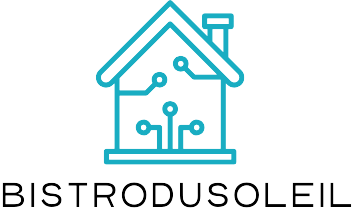Table of Contents
ToggleNavigating the world of home loans can feel like trying to find a needle in a haystack—if that needle was made of paperwork and the haystack was constantly shifting. Today, FHA interest rates are a hot topic, and for good reason. They can make or break a homebuyer’s budget, and understanding them can save thousands.
Overview of FHA Interest Rates Today
FHA interest rates reflect current market conditions, impacting home buyers’ financing options. Current rates hover around 3.00% to 4.00%, although they can fluctuate based on individual circumstances and lender criteria. Many factors influence these rates, including loan-to-value ratios and credit scores.
Financial institutions often adjust their offerings, making it crucial for buyers to compare various lenders to secure the best terms. Borrowers with higher credit scores frequently enjoy lower rates, simplifying their monthly payments. A comprehensive shop for rates can reveal significant differences that affect overall loan costs.
Government-backed support through FHA loans contributes to these favorable interest rates. The lower down payment requirement, typically 3.5%, continues to attract first-time homebuyers and those with limited savings. Access to FHA loans provides opportunities that conventional loans may exclude, making homeownership more attainable.
Recent trends indicate rising interest rates, signaling potential changes in the market. Buyers should monitor these shifts closely, as economic factors can lead to rate adjustments. Consulting a financial expert can offer insight into how these changes may impact individual circumstances.
Understanding FHA interest rates is essential for prospective homebuyers. Serious consideration of current rates, combined with personal financial situations, leads to informed homeownership decisions. Engaging with professionals ensures access to the best possible rates and loan terms.
Factors Influencing FHA Interest Rates
FHA interest rates depend on various factors that shape the mortgage landscape.
Economic Conditions
Economic conditions heavily influence FHA interest rates. Inflation rates, employment figures, and consumer spending affect market confidence. For example, rising inflation typically leads to increased interest rates as lenders seek to maintain profit margins. Economic growth, indicated by a strong job market, often results in lower unemployment and more borrowing, which can affect demand for loans. When economic uncertainties arise, lenders may adjust rates in response to market fluctuations. As these conditions shift, potential homebuyers should stay attuned to them to understand how they impact purchasing power.
Federal Reserve Policies
Federal Reserve policies play a crucial role in determining FHA interest rates. Changes in the federal funds rate directly affect borrowing costs for financial institutions. An increase in the federal funds rate often leads to higher mortgage rates, while a decrease can lower them. The Federal Reserve’s actions, such as quantitative easing or tightening, also impact liquidity in the financial system. These policy decisions influence mortgage lenders’ willingness to extend credit and, subsequently, the rates they offer consumers. Awareness of these policies helps buyers and lenders forecast potential rate movements.
Current FHA Interest Rate Trends
Current FHA interest rates reflect market dynamics, and staying updated is essential for homebuyers. Potential buyers face rates between 3.00% and 4.00%, influenced by various economic factors.
Historical Comparison
Historical FHA interest rates reveal fluctuations that assist buyers in understanding the current market landscape. In recent years, rates hovered around 3.50% to 4.25%, driven by economic conditions and Federal Reserve policy adjustments. Comparing the recent increase to lower rates during the last decade highlights the importance of timing in securing loans. Changes in rate trajectories often correlate with economic recovery, making awareness of historical trends crucial for prospective homeowners.
Regional Variations
Regional disparities directly impact FHA interest rates, making it necessary for buyers to examine local market conditions. For instance, rates often differ between urban and rural areas, with cities typically showcasing slightly higher rates due to demand. Local economies and housing markets play critical roles, resulting in variations across states and regions. Connecting with local lenders provides insight into these variations, enabling buyers to make informed decisions tailored to their circumstances.
Benefits of FHA Loans
FHA loans offer several advantages that make them appealing to various homebuyers.
Lower Down Payment Requirements
Down payment requirements remain a significant hurdle for many buyers. FHA loans allow down payments as low as 3.5% of the purchase price. This affordability enables first-time buyers or those with limited savings to enter the housing market more easily. Opting for an FHA loan provides access to homeownership that might seem unattainable with conventional loans. Buyers can divert their savings toward other expenses such as closing costs or home repairs, alleviating financial pressure while purchasing a home.
Flexible Credit Score Standards
Credit score flexibility strengthens the appeal of FHA loans. Borrowers with credit scores as low as 580 can qualify for the required 3.5% down payment. Those with scores below 580 may still obtain an FHA loan with a higher down payment of 10%. This leniency opens doors for individuals with limited credit history or previous financial difficulties. Mortgage experts recommend FHA loans for buyers aiming to improve their credit over time while enjoying the benefits of homeownership, showcasing a path to recovery and stability.
Challenges of FHA Financing
Challenges exist with FHA financing that potential borrowers should consider. Despite its benefits, some barriers can affect the overall homebuying experience.
Mortgage Insurance Premiums
Mortgage insurance premiums (MIPs) represent a significant cost for FHA borrowers. Unlike conventional loans, FHA loans require both an upfront MIP and a monthly premium, impacting the overall loan cost. Borrowers must pay 1.75% of the loan amount upfront, which can be financed into the mortgage. Monthly premiums vary and can last for the life of the loan, especially if the down payment is below 10%. This additional cost can lead to higher monthly payments, making it essential for buyers to calculate these premiums when budgeting for their home.
Property Eligibility Requirements
Property eligibility requirements add another layer of complexity to FHA financing. Properties must meet specific standards set by the Department of Housing and Urban Development (HUD). This includes ensuring the home meets minimum safety and livability standards, and homes in certain conditions may require repairs before financing approval. Additionally, the property must serve as the borrower’s primary residence, limiting investment properties or vacation homes. Buyers must also consider whether the intended property type aligns with FHA guidelines for financing to avoid issues during the approval process.
Staying informed about FHA interest rates is crucial for potential homebuyers. Understanding how these rates impact overall costs can lead to significant savings over time. As market conditions continue to evolve it’s essential to compare lenders and explore various options available to secure the best possible terms.
First-time buyers and those with limited savings should take advantage of the benefits FHA loans offer. With lower down payment requirements and flexible credit score standards, these loans provide a pathway to homeownership. However, awareness of associated costs like mortgage insurance premiums is vital for effective budgeting.
Engaging with financial experts and local lenders can provide valuable insights tailored to individual circumstances. By remaining proactive and informed homebuyers can navigate the complexities of FHA financing and make sound decisions that align with their financial goals.




